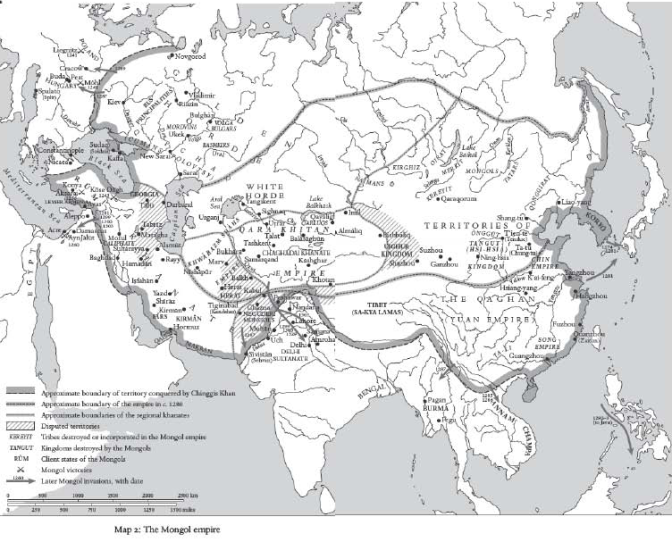Their main page is http://afe.easia.columbia.edu/special/silk_road.htm
- • The Silk Roads: An Educational Resource [Education About Asia, The Association for Asian Studies]
- This article by the City University of New York professor Morris Rossabi appeared in the Spring 1999 issue of Education About Asiamagazine.
- • The International Dunhuang Project: The Silk Road Online [The British Library]
- The International Dunhuang Project is "a ground-breaking international collaboration to make information and images of all manuscripts, paintings, textiles and artefacts from Dunhuang and archaeological sites of the Eastern Silk Road freely available on the Internet and to encourage their use through educational and research programs." This website is a truly comprehensive resource for teaching about the Silk Road. See especially the EDUCATION>TEACH section for teaching websites on various topics, including Buddhism on the Silk Roadand The Silk Road: Trade, Travel, War and Faith.
- Art of the Silk Road: Cultures: The Sui Dynasty [University of Washington, Simpson Center for the Humanities]
- The Travel Records of Chinese Pilgrims Faxian, Xuanzang, and Yijing: Sources for Cross-cultural Encounters between Ancient China and Ancient India [PDF] [Education About Asia, Association for Asian Studies]
- Article about three Chinese monks who traveled to India: Faxian (337?-422?), Xuanzang (600?-664), and Yijing (635-713). With maps. Reprinted with permission of the Association for Asian Studies.
- Lesson Plan + DBQs • Religions along the Silk Roads >> Xuanzang's Pilgrimage to India [PDF] [China Institute]
- Unit Q from the curriculum guide From Silk to Oil: Cross-cultural Connections along the Silk Roads, which provides a comprehensive view of the Silk Roads from the second century BCE to the contemporary period. In this lesson "students will travel with the pilgrim-monk Xuanzang (c. 596-664) and share some of the hardships of his journey. They will learn about religious pilgrimage from a Buddhist point of view."
- • Xuanzang: The Monk Who Brought Buddhism East [Asia Society]
- "The life and adventures of a Chinese monk who made a 17-year journey to bring Buddhist teachings from India to China. Xuanzang subsequently became a main character in the great Chinese epic Journey to the West."
Mongol Empire (Yuan Dynasty) 1279-1368 CE
- Overview Maps • Dynasties of China [The Genographic Project: Atlas of the Human Journey, NationalGeographic.com]
- Printable Map • Maps of Chinese Dynasties: Yuan Dynasty [The Art of Asia, Minneapolis Institute of Arts]
- Interactive Map • Yuan Dynasty, 1260–1368 [Princeton University Art Museum]
- • The Mongol Dynasty [Asia Society] Background about "Kublai Khan, grandson of Genghis Khan
- • The Mongols in World History [Asia for Educators]
- The Mongols' Mark on Global History (International Trade, Pax Mongolica, Support of Artisans, Religious Tolerance
- The Mongol Conquests (What Led to the Conquests?, Chinggis Khan's Role, The Empire's Collapse, etc.); The Mongols in China (Khubilai Khan, Life in China under Mongol Rule, etc.);
- Key Figures in Mongol History (Chinggis Khan, Khubilai Khan, Ögödei, Marco Polo); and
- The Mongols' Pastoral-Nomadic Life
- Video Unit • The World Empire of the Mongols [Open Learning Initiative, Harvard Extension School]
- Lesson Plan + DBQs • Ethnic Relations and Political History along the Silk Roads >> China under Mongol Rule: The Yuan Dynasty (1279-1368) [PDF] [China Institute]
- From Silk to Oil: Cross-cultural Connections along the Silk Roads, which provides a comprehensive view of the Silk Roads from the second century BCE to the contemporary period. "This unit investigates why the Mongols can be considered the greatest conquerors in world history. Students will look at how the Mongol conquests changed the Eurasian world and discuss how Khubilai Khan (1215-1294) and his advisors ruled one of the greatest prizes won by Mongol armies: China."
- Marco Polo, 1254-1324
- AFE Special Topic Guide • Marco Polo in China [Asia for Educators]
- A compilation of primary source readings, discussion questions, and lesson ideas intended to expose students to the impressive developments in Chinese civilization during the Yuan period.

Warfare is a fascinating subject. Despite the dubious morality of using violence to achieve personal or political aims. It remains that conflict has been used to do just that throughout recorded history.
ReplyDeleteYour article is very well done, a good read.